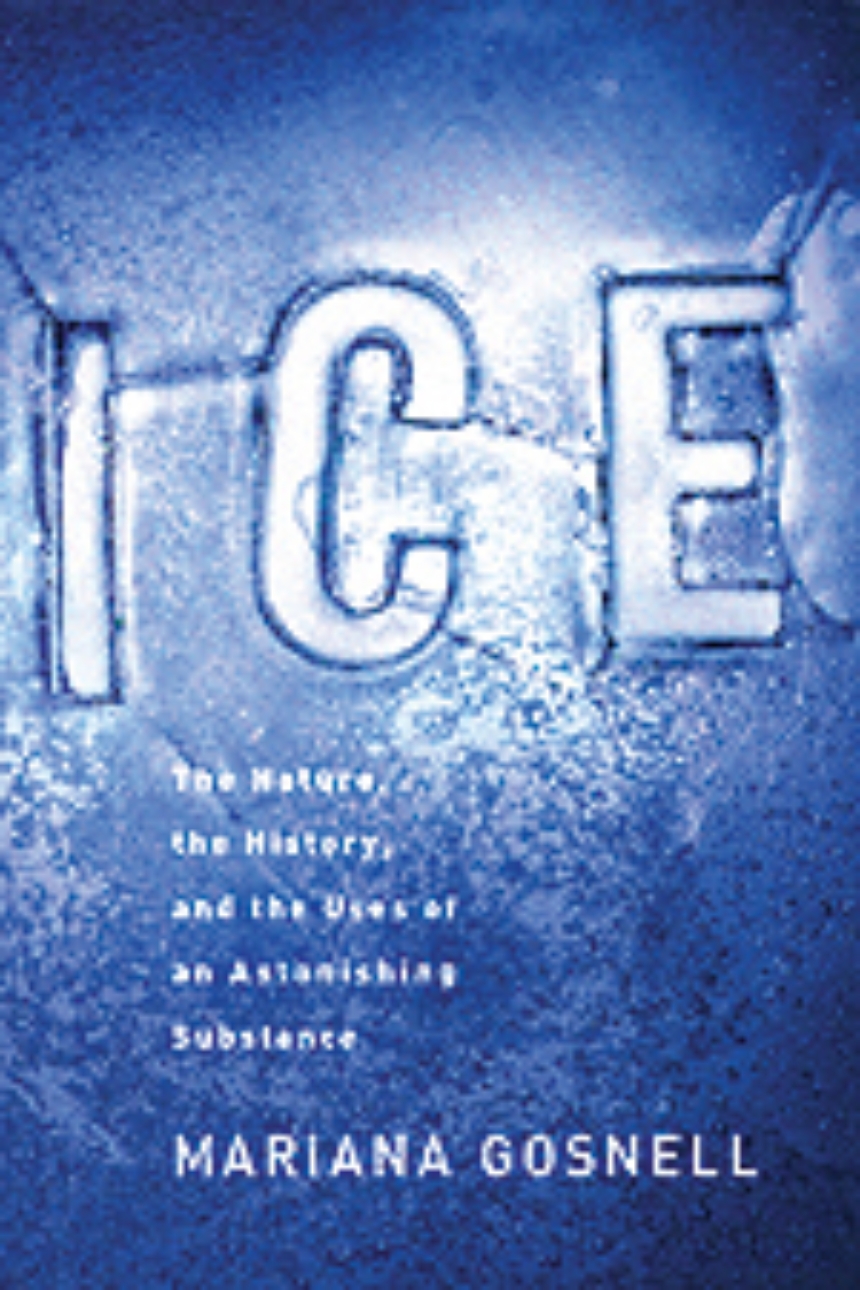Ice
The Nature, the History, and the Uses of an Astonishing Substance
Mariana Gosnell here explores the history and uses of ice in all its complexity, grandeur, and significance. From the freezing of Pleasant Lake in New Hampshire to the breakup of a Vermont river at the onset of spring, from the frozen Antarctic landscape that emperor penguins inhabit to the cold, watery route bowhead whales take between Arctic ice floes, Gosnell examines icebergs, icicles, and frostbite; sea ice and permafrost; ice on Mars and in the rings of Saturn; and several new forms of ice developed in labs. Arecord of the scientific surprises, cultural magnitude, and everyday uses of frozen water, Ice is a sparkling illumination of a substance whose ebbs and flows over time have helped form the world we live in.
“Gosnell travels to the ends of the earth, into the clouds and under the frozen sea to conduct her investigations . . . By the time you finish this remarkable book, you’ll never think about freezing and melting in quite the same way.”—New York Times Book Review
“To read Ice is to discover just how astonishing it is and how necessary.”—San Francisco Chronicle
“A bright, curious, omnidirectional tour that will entrance nature readers.”—Booklist
“An encyclopedic work with surprises on every page . . . . Illustrated with images of ice castles, skaters, and bubble-filled frozen sculpture, Gosnell’s book breathes life into the crystals dubbed ‘glorious spangles’ by Henry David Thoreau.”—Discover
576 pages | 19 halftones, 33 line drawings | 6 x 9 | © 2007
Biological Sciences: Natural History
History: General History, History of Technology
Reviews
Table of Contents
Chapter One: Lakes
Chapter Two: Rivers
Chapter Three: Great Lakes
Chapter Four: Loading
Chapter Five: Breakup
Chapter Six: Alps
Chapter Seven: Surging Glaciers
Chapter Eight: West Antarctic Ice Sheet
Chapter Nine: Coring
Chapter Ten: On Glaciers
Chapter Eleven: Icebergs I
Chapter Twelve: Icebergs II
Chapter Thirteen: Sea Ice I
Chapter Fourteen: Sea Ice II
Chapter Fifteen: Ground Ice I
Chapter Sixteen: Ground Ice II
Chapter Seventeen: Plants
Chapter Eighteen: Animals I
Chapter Nineteen: Animals II
Chapter Twenty: Animals III
Chapter Twenty-One: Animals IV
Chapter Twenty-Two: Human I
Chapter Twenty-Three: Human II
Chapter Twenty-Four: Games I
Chapter Twenty-Five: Games II
Chapter Twenty-Six: Uses I
Chapter Twenty-Seven: Uses II
Chapter Twenty-Eight: Uses III
Chapter Twenty-Nine: Other Forms of Ice
Chapter Thirty: Atmosphere I
Chapter Thirty-One: Atmosphere II
Chapter Thirty-Two: Atmosphere III
Chapter Thirty-Three: Space I
Chapter Thirty-Four: Space II
Chapter Thirty-Five: Ice Ages
Chapter Thirty-Six: Lake of the Woods
Acknowledgment
Notes
Select Bibliography
Index
